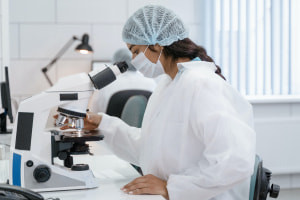
Advanced Level
Microbiologia fondamentale
- Learners already enrolled
Microbiologia fondamentale
Scopri come gli esseri viventi che non possiamo notare ad occhio nudo influiscono su di te e sul nostro mondo in questo corso online gratuito.
Se hai mai dubitato dell'importanza di comprendere gli organismi microscopici come i virus, il COVID-19 potrebbe averti fatto cambiare idea. Il COVID-19 non è indubbiamente il primo o l'ultimo virus che avr�... Se hai mai dubitato dell'importanza di comprendere gli organismi microscopici come i virus, il COVID-19 potrebbe averti fatto cambiare idea. Il COVID-19 non è indubbiamente il primo o l'ultimo virus che avrà un impatto sull'umanità. In tempi così incerti, la conoscenza è potere e può essere confortante. Sai molto sui virus? Che ne dici di altri microbi come batteri, funghi, parassiti o prioni. Questo corso ti fornirà informazioni e calmerà la tua ansia.
COURSE PUBLISHER -
What You Will Learn In This Free Course
- -
- -
- -
- -
Complete This CPD Accredited Course & Get Your Certificate!
Certify Your Skills
A CPD accredited Alison Diploma/Certificate certifies the skills you’ve learnedStand Out From The Crowd
Add your Alison Certification to your resumé and stay ahead of the competitionAdvance in Your Career
Share your Alison Certification with potential employers to show off your skills and capabilities
Learner Reviews & Feedback
Microbiologia fondamentale
View More Reviews
Back to top
Back to course information
Want to create a customised learning path for your team?
Our dedicated Learning Advisors are here to help you curate a customised learning path tailored to your organisation's needs and goals.
Not sure where to begin?
Discover the career most suitable for you and get started in the field with a step-by-step plan.
Get your Plan
















 Avg. Hours
Avg. Hours  CPD Accredited
CPD Accredited 

 Total XP:
Total XP: 
 Knowledge & Skills You Will Learn
Knowledge & Skills You Will Learn 


